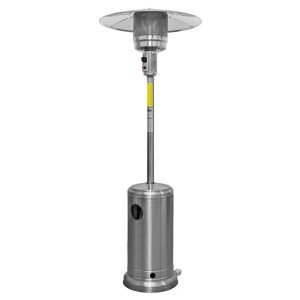20 Things You Need To Be Educated About Buy Gas Radiant Heaters
Buying Gas Radiant Heaters: A Comprehensive Guide
Gas radiant heaters have gotten appeal in recent years for their effectiveness and ability to offer instant heat. As more house owners and organizations search for methods to keep their areas comfortable, understanding the functions, advantages, and factors to consider when purchasing these heating units can be very helpful. This post looks into the intricacies of gas radiant heaters, assisting possible buyers in making notified decisions.
What are Gas Radiant Heaters?
Gas radiant heaters are devices that utilize propane or natural gas to release heat directly into a room. Instead of heating the air, they warm objects and individuals in their area, offering convenience more quickly and efficiently. try these guys out are popular for both indoor and outdoor settings due to their adaptability and efficiency.
Secret Features of Gas Radiant Heaters
- Direct Heating: Unlike traditional heaters that warm the air, gas radiant heaters provide direct heat, making them an efficient option for quickly warming up areas.
- Portability: Many models are available as portable systems, permitting them to be easily moved from one area to another.
- Fuel Variety: Gas radiant heaters can be powered by gas or propane, offering users versatility based upon accessibility and choice.
- Adjustable Settings: Most gas radiant heaters featured adjustable heat settings, enabling users to tailor the level of heat based on their needs.
Advantages of Gas Radiant Heaters
- Energy Efficiency: These heaters convert gas into heat efficiently, leading to lower utility expenses compared to electric heaters.
- Quick Heating: Radiant heat is felt practically instantly, making these heaters ideal for sudden temperature level drops.
- Low Maintenance: Gas radiant heaters usually require less upkeep than electric models, making them a problem-free option.
- Ecologically Friendly: When powered by tidy gas, these heaters can be a more ecologically sustainable option compared to other heating techniques.
Kinds Of Gas Radiant Heaters
When it comes to selecting a gas radiant heater, it's important to understand the various types available. Below are the most common options:
- Indoor Gas Radiant Heaters: Designed for indoor areas, these heaters are normally vented or unvented and typically come with integrated security features.
- Outdoor Gas Radiant Heaters: Commonly utilized in patio areas or outdoor dining areas, these heaters are developed to hold up against the components.
- Wall-Mounted Gas Radiant Heaters: A space-saving choice, these units are ideal for smaller sized spaces and can be outfitted with different heat outputs depending on the area's requirements.
- Freestanding Gas Radiant Heaters: These portable models can be utilized in numerous areas, perfect for those who require flexibility.
Buying Guide: How to Choose the Right Gas Radiant Heater
When buying a gas radiant heater, numerous aspects must be thought about to guarantee you choose the best model for your space:
1. Heating Capacity
- Measured in BTUs (British Thermal Units), the heater's capacity determines how much location it can effectively warm. Purchasers need to assess their specific requirements based on room size.
Room Size (sq ft)
Recommended BTUs (for Gas Radiant Heaters)
100 – 200
5,000 – 10,000 BTUs
200 – 400
10,000 – 20,000 BTUs
400 – 600
20,000 – 30,000 BTUs
600 – 800
30,000+ BTUs
2. Type of Gas
- Think about whether you will be utilizing propane or gas, as various heaters accommodate various fuel types.
3. Safety Features
- Try to find models geared up with security functions such as automated shut-off valves, tip-over defense, and oxygen depletion sensing units.
4. Installation Requirements
- Some heaters might require expert installation, specifically vented designs. Make certain to consider the expenses and requirements connected with installation.
5. Mobility
- If flexibility is necessary, consider portable models that can be easily moved from one area to another.
Installation and Maintenance
Gas radiant heaters are usually simple to install, especially portable designs. Nevertheless, vented options may necessitate professional setup to ensure they meet regional safety codes.
Upkeep normally involves:
- Regular cleansing to prevent dust accumulation.
- Examining gas connections and fittings for leakages.
- Making sure safety features are functional.
Idea: Regular checks around the unit can help extend its lifespan and maintain safety.
Frequently Asked Questions (FAQs)
Q1: Are gas radiant heaters safe for indoor use?A1: Yes
, as long as they are properly vented and equipped with required safety features, they can be securely used inside.
**Q2: Can gas radiant heaters be used in enclosed spaces?A2: Unvented gas heaters can pose threats in enclosed spaces due to possible suffocation or carbon monoxide buildup. Constantly ensure sufficient ventilation. Q3: How do I know what size heater I need?A3: The suitable size depends upon the area you mean to heat. Describe the BTU chart
above to determine your requirements. Q4: What is the distinction between propane and natural gas heaters?A4: The main difference depends on their energy source
**; propane is provided via tanks, while gas is normally piped into homes. Q5: How can I optimize efficiency?A5: Ensure the heater is appropriately sized for your space, keep it regularly, and consider using it in mix
**with other heating techniques for maximum comfort. Stylish Outdoor Heaters can be a great addition to any home or organization, using energy-efficient and fast heating solutions. By comprehending the various types, features, and considerations
when acquiring, purchasers can make educated choices that fulfill their heating requires. With the best option, these heaters provide comfort, reliability, and an inviting environment throughout cooler seasons.  ******
******